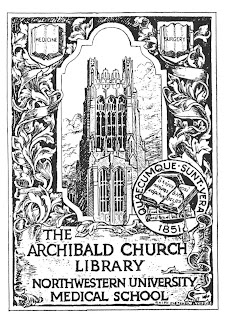

All sorts of material is serviceable for the factual part of bookplates. Entrance gates, houses, fireplaces, libraries, whimsical or literary ideas, fishing or hunting, golf, sailing, not to mention armorial, typographical and other styles, all are motifs that serve as material on which to base a bookplate design. In fact it seems to be of little importance what the subject may be and of much importance how it is used. The most significant development in bookplates has been the markedly finer quality of the art and design evident in modern work. At the commencement of their history and now again, having passed through a long period of mediocrity, typical bookplates are excellent in design and require first rate and creative artists to design them.
It is desirable that well designed bookplates accentuate the manner in which they have been reproduced, whether woodcut, line engraving, halftone or collotype, and the more nearly this method is expressive of the craft to typography the more proper is the mechanical part of the print. Perhaps the least used method at present and perhaps the best is the woodcut, when done in the very early manner and by a good craftsman. Plates, so reproduced, present the peculiarly harmonious appearance of works of art, showing the little marks of the cutting tool characteristic of the woodcut. The same may be said for the engraved or etched plate. Halftones and collotype tend to erase these marks. Line drawings, which are reproduced mechanically into zinc printing plates often are too much reduced from the original drawing to keep any character, or have too much solid black or lines too thin and stringy, and are therefore often disappointing.





No comments:
Post a Comment